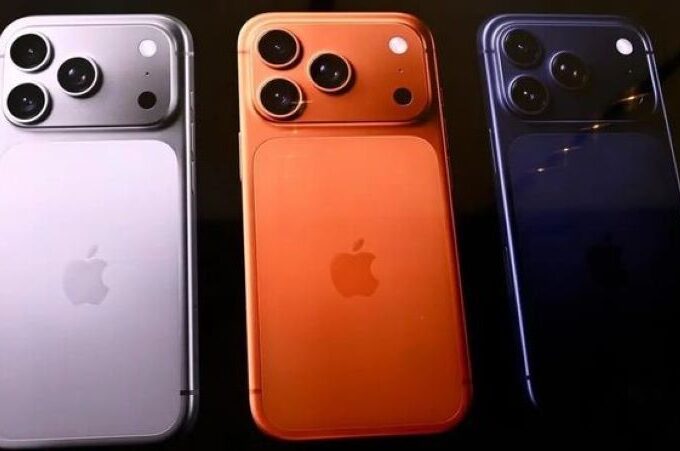Meta has launched three AI smart glasses models targeting different user groups and announced the opening of its developer platform, marking its push into the consumer-grade AI glasses market. Meta CEO Mark Zuckerberg emphasized the unique value of smart glasses, stating they are the only devices that allow AI to “see what users see and hear what users hear,” providing assistance without disrupting real-world experiences—an advantage unavailable to smartphones or VR headsets. He previously predicted that “people not wearing smart glasses in the future may face significant cognitive disadvantages.”
Three Glasses Models for Differentiated Needs
The core product of the conference, Meta Ray-Ban Display, is the first consumer-grade device with a high-resolution display, priced at $799. It features a semi-transparent heads-up display (HUD) embedded in the right lens, boasting a brightness of 5000 nits for clear information display even in strong outdoor light. The screen is invisible from the outside, balancing practicality and privacy.
To enable contactless control, Meta also released the Meta Neural Band EMG wristband. Based on surface electromyography signal recognition technology, the wristband captures subtle movements of the wrist and fingers, supporting pinch switching, swipe scrolling, and “finger-tip writing” input. Functionally, Ray-Ban Display can be used independently of smartphones: users can check social media messages, make video calls, and get navigation guidance on the lens. AI-powered real-time translation displays conversation subtitles synchronously, and integration with Meta AI allows access to schedule reminders and nearby service searches. The glasses offer approximately 6 hours of battery life on a single charge, extendable to 30 hours with the charging case, meeting all-day usage needs.

For the mass consumer market, Meta introduced the second-generation Ray-Ban Meta, priced at $379. It retains Ray-Ban’s classic frame design, available in multiple styles and a transparent limited edition. Key upgrades focus on battery life and imaging capabilities: mixed-use battery life increased from 4 hours (of the first generation) to 8 hours, with the charging case providing an additional 48 hours of power and supporting 20-minute fast charging to 50%. Equipped with a 12-megapixel camera, it enables 3K resolution recording and has 32GB of built-in storage. Software-wise, it adds a “Conversation Focus” feature that uses AI algorithms to amplify the voice of the conversation partner and suppress ambient noise; this feature will later cover the previous-generation Ray-Ban Meta via OTA updates. Additionally, the “Live AI” feature allows users to interact continuously with Meta AI without a wake word, facilitating queries about life and work-related information.
In collaboration with sports brand Oakley, Meta launched the Oakley Meta Vanguard, priced at $499. Designed for durability and sports adaptation, it has an IP67 dust and water resistance rating, withstanding short-term immersion in 1-meter-deep water. It comes with replaceable Oakley PRIZM lenses that adjust light transmittance based on sunlight intensity and sports scenarios to reduce glare. Performance-wise, it is equipped with a center-mounted wide-angle lens, supporting 3K video recording and intelligent image stabilization, as well as slow-motion and time-lapse photography modes. The open speakers have increased volume compared to previous models, and with wind noise suppression technology, the official claims clear voice command recognition even in strong winds. Battery life reaches 9 hours for mixed use, extendable to 36 hours with the charging case. It supports connection to sports platforms: users can query real-time sports data via voice, and the glasses automatically record clips of personal bests during sports. An LED indicator above the right eye turns red when the heart rate deviates from the target range, aiding sports monitoring.
Open Platform and AI Tech Advancements
Alongside hardware releases, Meta announced the opening of its smart glasses platform and launched the “Wearables Device Access Toolkit.” This toolkit allows third-party developers to access the glasses’ sensors (cameras, microphones) and AI capabilities for application development. Previously, Meta’s smart glasses only supported a few third-party services, resulting in a relatively closed ecosystem.
Current disclosed collaboration cases include Twitch developing a “first-person real-time live streaming” feature based on the platform, Disney planning a theme park AI navigation app to check ride wait times and show schedules, and golf data service provider 18Birdies integrating professional sports data functions. Additionally, new applications will support the previous-generation Ray-Ban Meta, limited to voice interaction features.
In terms of AI technology, Meta further enhanced the “active assistance” capabilities of its smart glasses. Beyond “Live AI,” the glasses can recognize the environment through computer vision—for example, helping visually impaired users describe surrounding objects and read food labels.

Market Landscape and Future Trends
Meta Ray-Ban Display has basic AR display capabilities but is essentially a “screen-equipped smart glass,” serving as Meta’s transitional attempt in the AR field. It aims to accumulate user data and interaction experience in the consumer market to lay the groundwork for the Orion AR headset prototype planned for 2027.
AR headset manufacturer HTC also launched its first smart glass, VIVE Eagle, in September. Compared with Meta’s products, the two have distinct focuses: VIVE Eagle emphasizes “lightweight AR experience,” supporting basic AR navigation and information overlay functions, and is adapted for B-end scenarios such as corporate training and offline retail. Meta’s smart glasses, by contrast, center on “AI interaction + daily practical functions,” focusing on C-end users’ daily needs.
While Meta’s smart glasses and AR headsets have not entered the Chinese market, local Chinese brands have gained first-mover advantages in certain niche scenarios. The domestic smart glass market is still in its infancy, with well-known brands like Huawei, Xiaomi, and OPPO offering related products. For instance, the Huawei Smart Glass 2 supports HarmonyOS ecosystem integration, features a voice assistant and health monitoring functions, and is priced at approximately 2,000-3,000 yuan, aligning more with Chinese users’ price expectations. Compared with Meta’s products, local brands excel in ecosystem integration (such as in-depth adaptation of domestic social and payment apps), localized services (like synchronization with domestic navigation and social platforms), and more competitive pricing.
Furthermore, China holds significant advantages in the core supply chain of smart glasses. According to a Bank of America Securities report, over 80% of manufacturers in the global smart glass supply chain are from China. Companies such as Goertek, Crystal-Optech, and Sunny Optical have mass production capabilities in product manufacturing and core optical components. This supply chain advantage not only reduces production costs for local brands but also accelerates technological iteration—the update cycle for smart glasses of major domestic brands is approximately 12-18 months, faster than Meta’s 24-month cycle.












